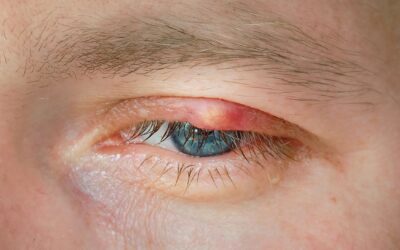Dry Eye Complications: Neuropathic Pain
You’ve got acute dry eye symptoms but testing doesn’t show that your eyes are dry.
Or you’ve had treatment for dry eyes but you still have eye pain.
You might have neuropathic ocular pain.
What is neuropathic ocular pain?
Neuropathic ocular pain is a condition where nerve dysfunction causes pain on the eye surface which mimics that of dry eye. Typical symptoms include burning, shooting pains, and increased sensitivity to wind and light. It can precisely mimic dry eye and also be present alongside the true form of dry eye.
The cornea is packed with sensory nerves, so dysfunction causes extremely severe eye pain, worse than in typical dry eye syndrome. It can have a considerable impact on quality of life and the ability to function. Not only does it affect physical wellbeing, it also affects mental health. Anxiety co-exists with the pain, which then increases sensitivity to pain, creating a vicious circle of seemingly endless misery. Frustration at being brushed off by doctors when they can’t find any abnormalities in the eye also contributes to impaired mental wellbeing.
What causes neuropathic ocular pain?
There are two types of neuropathic pain:
- Ocular surface pain, where the nerves endings in the cornea develop hypersensitivity, triggering pain responses inappropriately. These increased responses also cause inflammation, which then adds to the pain response. With time, these inappropriate responses can affect function at central nervous system level.
The hypersensitivity can be caused by surgery such as Lasik, injury or infection, or by an underlying disease. It’s not always apparent what triggers the dysfunction and it’s not generally relevant to treatment.
- Central neuropathic pain, which is thought to be a sensitivity of central nervous system function, in which there is a lower threshold for the perception of sensory information.
It is unclear how and why this happens, although genetics appear to play an important role. Central sensitisation is believed to be part of the mechanism involved in a number of pain-related disorders such as fibromyalgia, IBS and chronic headache. These patients often also experience psychological and social symptoms, e.g. depression, anxiety, anger, interpersonal issues.
How is it diagnosed?
There are no specific tests for ocular neuropathic pain. Usually, a diagnosis will follow an examination which rules out dry eye. If the tear film and eye surface show no abnormality, ocular neuropathic pain will be considered. The pattern of symptoms (such as being worse in wind and light) and severity of the pain can also be a pointer, as well as the lack of response to a local anaesthetic. Another indication is the presence of co-existing conditions such as anxiety, depression, fibromyalgia and migraine, all of which are common in patients with ocular neuropathic pain.
How is it treated?
Treatment options include:
- Reducing anxiety through measures such as Yoga, exercise, psychotherapy and, if necessary, prescription medication.
- Low-dose steroid drops to reduce inflammation.
- Occasionally, providing protection to the surface of the eye and nerves with lubricants, punctal plugs, goggles/glasses, bandage contact lenses and scleral lenses.
- Medications such as gabapentin and pregabalin, tricyclic anti-depressants, SNRIs, antiepileptics, and low-dose opiods. Although these are generally used to treat other conditions, they have also been found to be helpful in managing neuropathic pain.
FURTHER READING
https://consultqd.clevelandclinic.org/dry-eye-and-ocular-neuropathic-pain-a-therapeutic-challenge/
https://www.aao.org/eyenet/article/managing-neuropathic-ocular-pain
https://www.ncbi.nlm.nih.gov/pmc/articles/PMC4728142/




